In children’s literature, finding stories that offer both cultural authenticity and captivating narratives can be a delightful discovery. “The Good Luck Cat,” penned by acclaimed Muscogee-Creek Nation poet and musician Joy Harjo and illustrated by Paul Lee, is one such gem. This book beautifully weaves together a heartwarming tale of a resilient feline with gentle nods to Native American life, making it a standout in contemporary children’s books.
The story introduces us to Woogie, an endearing striped cat affectionately deemed a “luck cat” by her family. From the outset, readers are drawn into Woogie’s world, learning about her uncanny ability to navigate perilous situations.
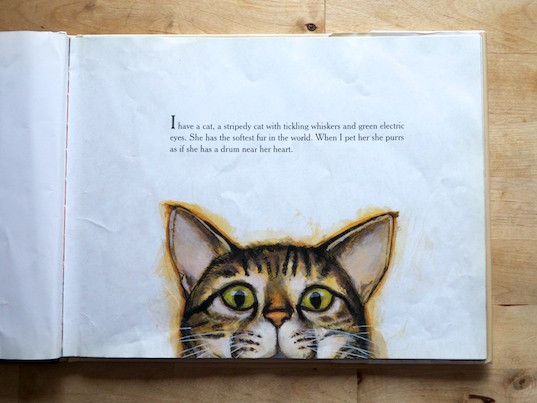 Woogie the striped cat is introduced as a luck cat
Woogie the striped cat is introduced as a luck cat
The narrative playfully hints at the folklore surrounding cats and their proverbial nine lives. Woogie embodies this myth, having survived a series of near-misses that would leave any ordinary cat with significantly fewer lives.
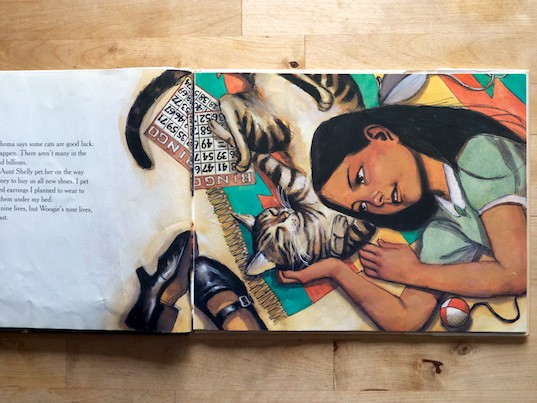 Woogie seems to be a luck cat
Woogie seems to be a luck cat
The book recounts Woogie’s close calls with a lighthearted touch, from a tumble out of a tree to a precarious spin in a clothes dryer. These anecdotes, while hinting at danger, are presented in a way that is engaging rather than frightening for young readers.
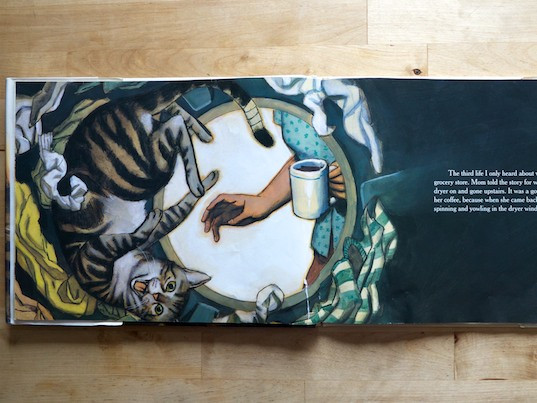 Woogie has used up eight of her nine lives in dreadful circumstances
Woogie has used up eight of her nine lives in dreadful circumstances
The central conflict arises when Woogie, with only her ninth life remaining, mysteriously disappears. The family’s frantic search underscores the deep bond they share with their beloved “luck cat,” emphasizing the emotional connection between children and their pets.
What sets “The Good Luck Cat” apart is its subtle yet significant incorporation of Native American culture. Joy Harjo, drawing from her Muscogee-Creek heritage, enriches the story with gentle cultural nuances. The book’s dedication, “in memory of my aunt Lois Harjo, who told me about the good luck of cats,” roots the narrative in personal and cultural storytelling traditions. While the story is universally relatable – revolving around pet ownership and affection – it is sprinkled with details that respectfully allude to Native life, such as mentions of attending a powwow. This approach avoids stereotypes and presents Native culture as a natural, integrated part of everyday life.
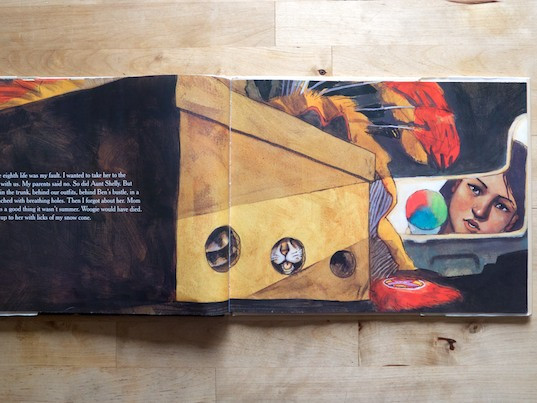 The book portrays Native life, but that isn’t its main purpose
The book portrays Native life, but that isn’t its main purpose
Paul Lee’s acrylic illustrations are a perfect complement to Harjo’s storytelling. Lee masterfully captures Woogie’s feline grace and the warmth of the family’s home. His realistic yet painterly style brings the characters and situations to life, making Woogie a truly memorable “luck cat.” Even for those who may not consider themselves “cat people,” Lee’s artistry makes Woogie an undeniably appealing character. The illustrations effectively balance realism with a touch of whimsy, ensuring that the potentially perilous situations are depicted with humor and without excessive scariness, making the book appropriate for its young audience.
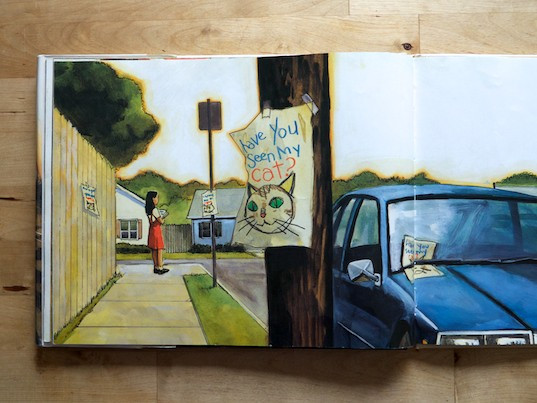 The illustrations are lovely and realistic
The illustrations are lovely and realistic
Some reviewers have expressed concern about the potentially frightening nature of Woogie’s near-death experiences. However, these incidents are handled with a light touch and are crucial to establishing Woogie’s reputation as a “luck cat.” These moments, rather than being genuinely scary, offer opportunities for discussion with children about pet safety, responsibility, and the sometimes unpredictable nature of pets. The book can spark conversations about caring for animals, appreciating their unique personalities, and even exploring the origins and meanings behind folklore like the “nine lives” of cats.
Ultimately, “The Good Luck Cat” is more than just a charming story about a pet. It is a celebration of resilience, the bonds we share with animals, and the quiet strength of cultural identity. Joy Harjo and Paul Lee have created a book that is both culturally significant and universally appealing. It’s a wonderful choice for parents, educators, and anyone seeking children’s literature that is both meaningful and thoroughly engaging. This “luck cat” story is sure to leave a lasting paw print on the hearts of readers young and old.

